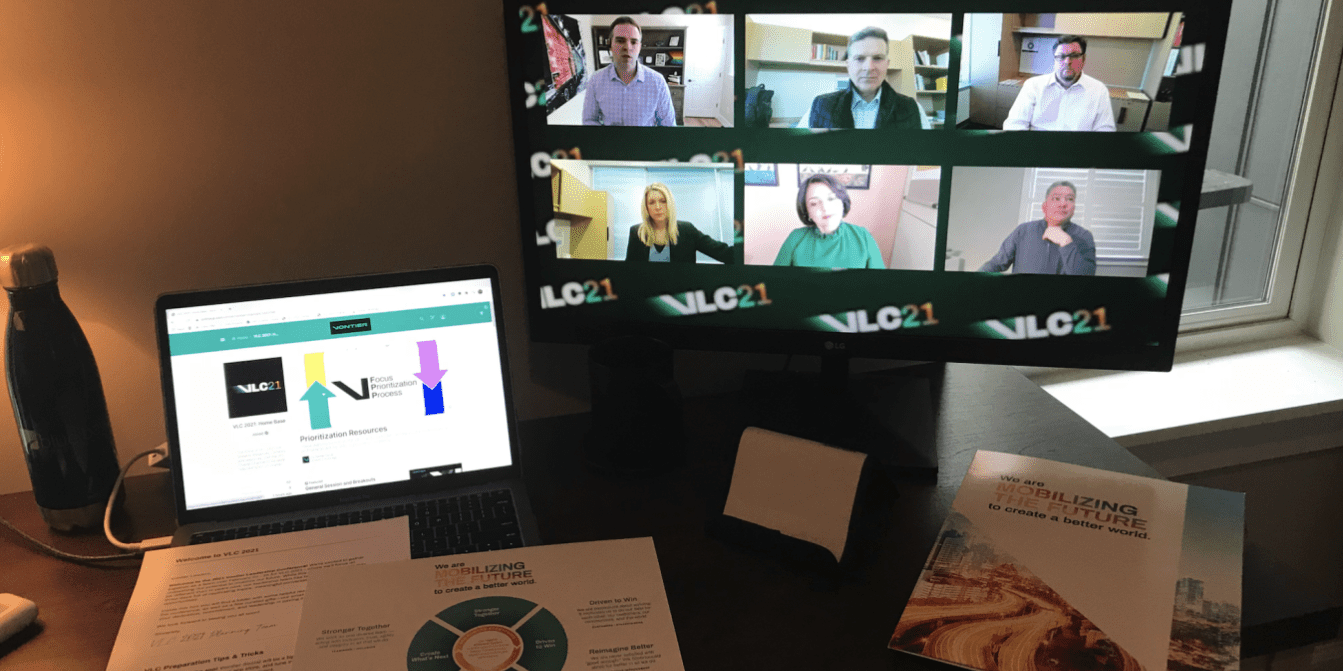5 Best Practices for Hosting a Successful Virtual Leadership Conference
“That’s the best conference we’ve had — it totally exceeded my expectations, especially in the virtual format.”
We’re hearing sentiments like these more and more from clients, and finding that, while nothing can completely replace in-person connection, leadership conferences can still be incredibly impactful — even via Zoom. Here are 5 best practices to design, develop, and host virtual leadership conferences that engage participants and inspire action.
5 Best Practices for Successful Virtual Leadership Conferences:
- Think holistically. Just as important in a virtual format as it is in-person — a clear purpose for the conference, and stakeholder alignment with that purpose are critical to success. Consider what you want participants to think, feel, and do during and after the event, and thread that through the agenda. In addition, don’t think of the conference as a stand-alone event. A successful event should be a launchpad for future action — connect it to your organization’s strategy and culture, and go into it with clear intentions, ideal outcomes, and expectations of each participant.
- Communicate clearly. Send clear and compelling communications to your team before, during, and after the conference. Consider the most engaging ways to bring information to your team in the virtual format — a mix of emails, Slack, social posts, videos, and more. Participants should go into the event knowing how to get the most out of it, and excited for the days ahead.
- Focus on the experience. Get creative with it — being virtual allows for a wide variety of mediums in which to distribute content. A strong virtual conference might include polls, storytelling videos that connect the conference topics to tangible business results, keynote speakers that use interactive presentations and powerpoints, word clouds, graphic facilitation and recording, and more. Think about the audience experience — not just how you’ll share the information, but how participants will receive it. Create a special experience for each attendee and ensure they know they’re an important part of the collective conversation, no matter how large the group is.
- Create connection points. To create meaningful connection points amongst participants (even at a large-scale event!), consider using video conferencing breakout rooms to put people in the same breakout group each time. This creates “cohorts,” so that attendees at a large conference can connect more deeply with a few people and continue learning with them after the event ends. Architect “fishbowl” conversations — which can help make the organizational changes being discussed at the conference feel real and accessible. Fishbowl conversations can break down barriers, and make what’s being shared at the conference feel less like a presentation, and more of an open and honest conversation.
- Inspire action. Don’t lose the opportunity for this conference to create and sustain momentum with your leaders. Think about the action you want them to take coming out of the conference, and make sure the sessions will equip them to do that. A great way to inspire action in the virtual format is to ask every leader to submit an actionable commitment during the conference. Solidify the actions they have committed to doing following the event, by sharing them real-time in a commitment reel during the closing segment of the conference!
Looking for support creating an engaging virtual conference or event? We’re here to help.
